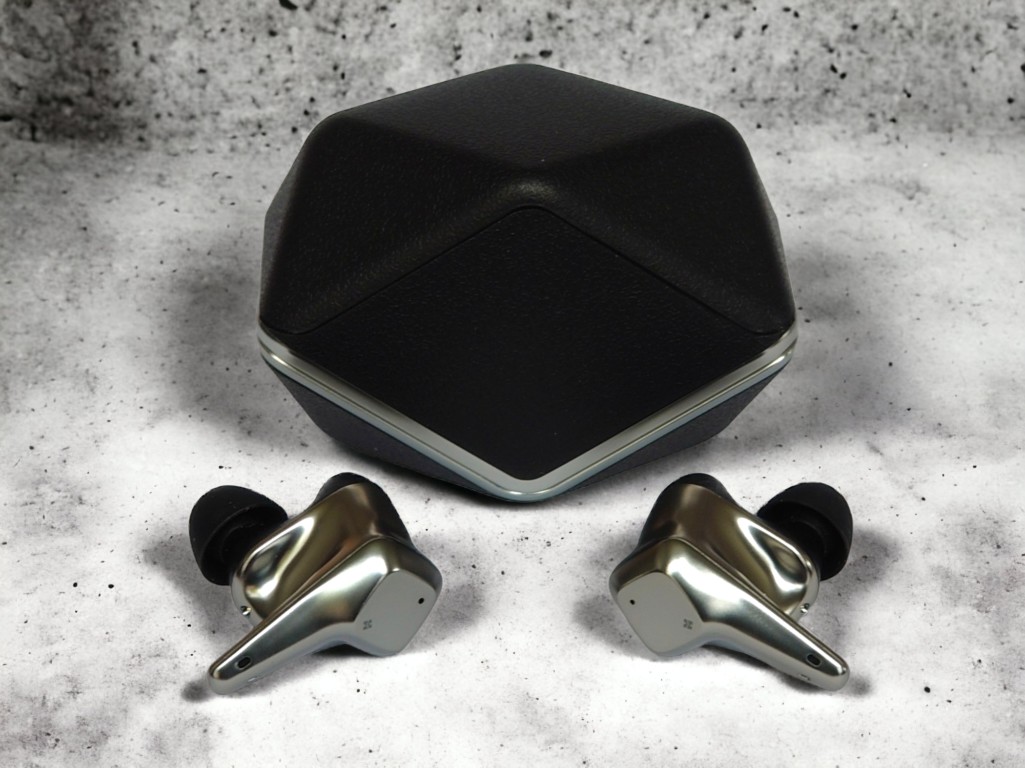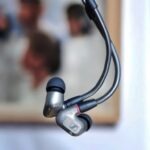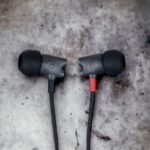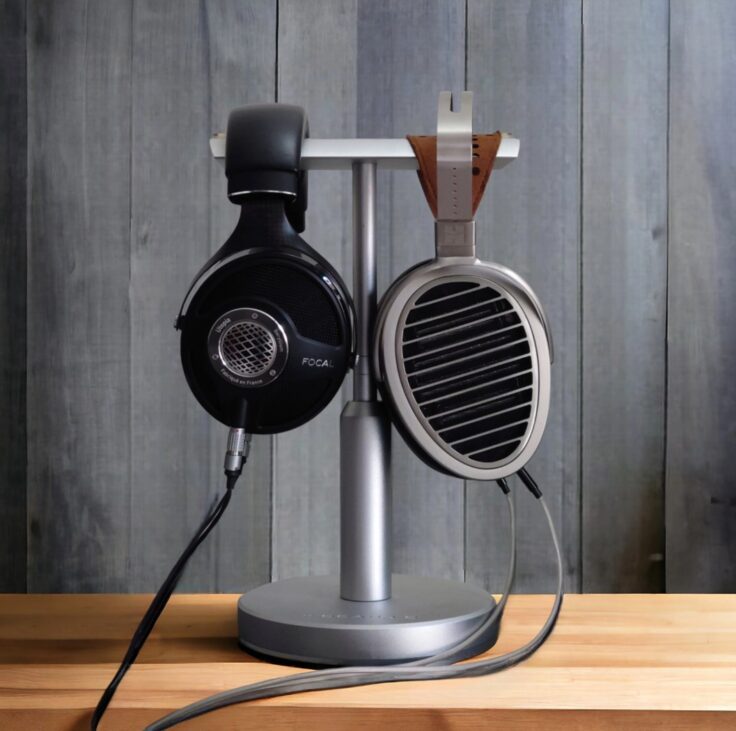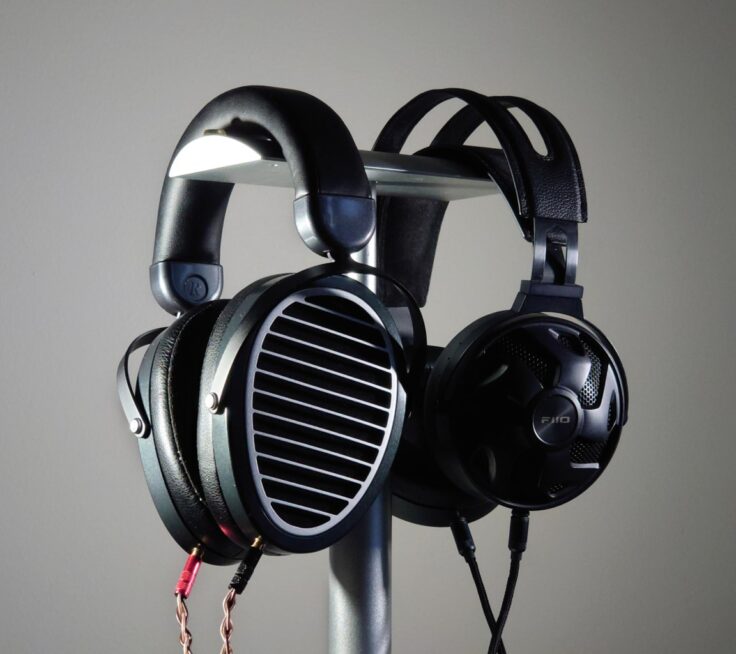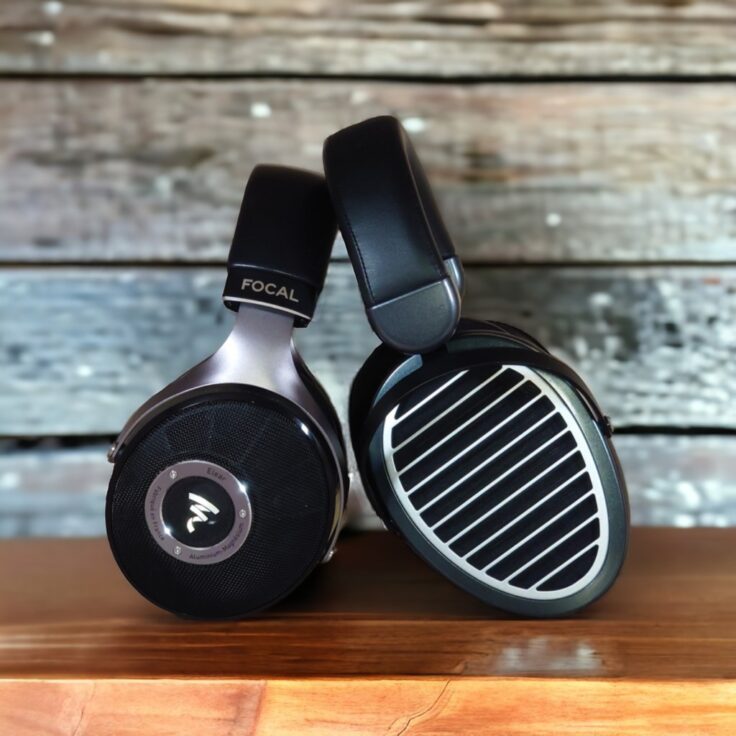Hifiman has made a name for themselves primarily by making great sounding over-ear planar magnetic headphones. These have been an important part of a high fidelity headphone revolution – together with Audeze, Hifiman brought us the modern era of planar magnetic headphones.
However, Hifiman has been doing other things on the side, which includes making portable music players (DAPs) and wired in-ear monitor headphones (IEMs) for a long time. They have also made several wireless in-ear monitors. However, the newest offering, the Svanar Wireless, is something special.
WHAT WE THINK
- Game-changing sound quality for a wireless in-ear monitor
- Rivals good wired setups
- Neutrally tuned with a hint of warmth. Delicate, natural midrange, great soundstage and lots of detail. Clean and non-fatiguing highs.
- The bass is good but could be tighter, some might prefer more bass quantity.
- Very light construction
- Comfortable to wear
- Good battery life
- ANC and Transparency modes could be more effective
- Charging case is large and difficult to open with one hand
- Nozzle might be a bit short to accommodate some third party tips
This page is supported by users when they donate or use affiliate links to shop for anything on Amazon via our link here .
We want to thank Hifiman for sending us the review sample.
THE SVANAR
First, let’s talk about the wired “Svanar”, which is Hifiman’s current flagship in-ear monitor (IEM). It is a no-compromise dynamic driver in-ear monitor, priced at an immodest $1999.
The Svanar is a single-driver IEM, featuring a proprietary 9.2 mm speaker unit (driver) with a “Topology Diaphragm”. Many high-end IEMs have multiple drivers, some as many as eight. Multi-driver systems have advantages and disadvantages. They make it possible to optimize each driver for the frequency they shall reproduce but at the same time phase incoherence and distortion is a problem because of overlapping between drivers and the crossover filter. With a single transducer, everything has to be reproduced by that single driver. However, almost every headphone in the world uses a single driver so it should not be impossible with IEMs.
Like Sennheiser, Hifiman has opted for the single-driver route. The “Topology Diaphragm“-part of the driver features a special Nanoparticle coating, and the result is supposedly a more natural and detailed sound. The Topology Diaphragm is inspired by Hifiman founder Dr. Fang Bian´s Ph.D. thesis about Nanomaterials and their physical properties. By carefully controlling the diaphragm surface structure Hifiman claims increased acoustic performance. This nanotechnology is used in several of Hifiman’s IEMs.
The housing of the Svanar is quite unique, made of aluminium and brass, with a thin layer of gold on one side. The exterior is specially crafted to be very comfortable but more decisive for the sound is the inside acoustic chamber, which is inspired by the acoustic characteristics of the Moscow Theatre, where the Hifiman team went to see the Swan Lake, which also inspired the name.
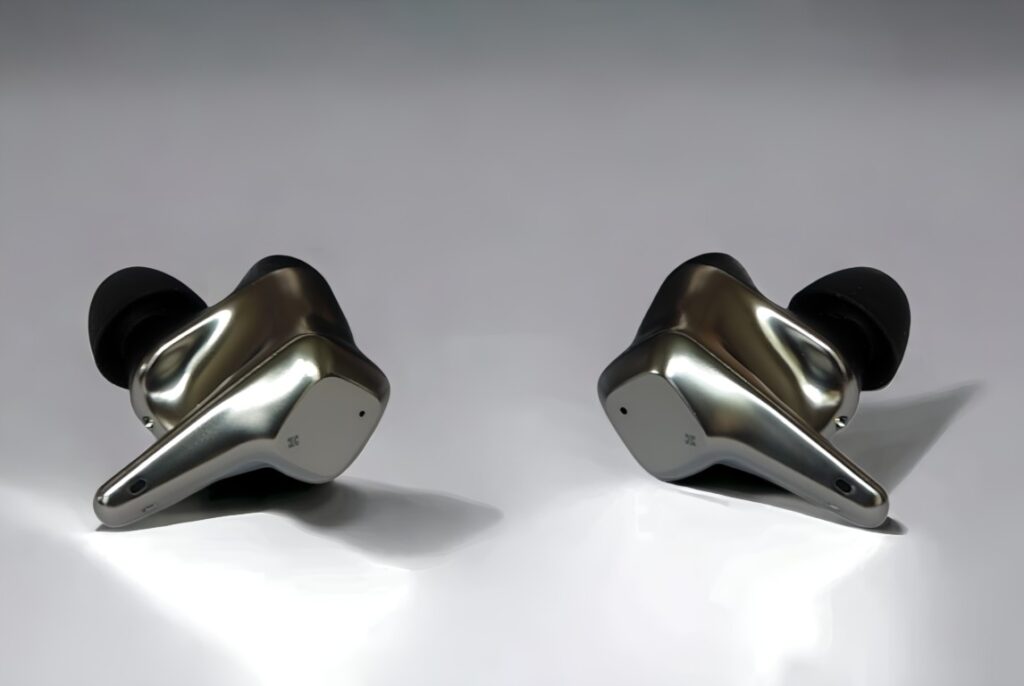
THE SVANAR WIRELESS
Obviously, the Svanar Wireless has gotten its name from Hifiman’s flagship IEM. The Svanar Wireless is priced at a more modest $499, which still is pretty expensive for a set of earbuds.
However, as we shall see, this is not a normal set of wireless earbuds. Like the Svanar, the Svanar Wireless has the “Topology Diaphragm” technology. They also share the design of the part that’s facing your ear, even though they use different materials .
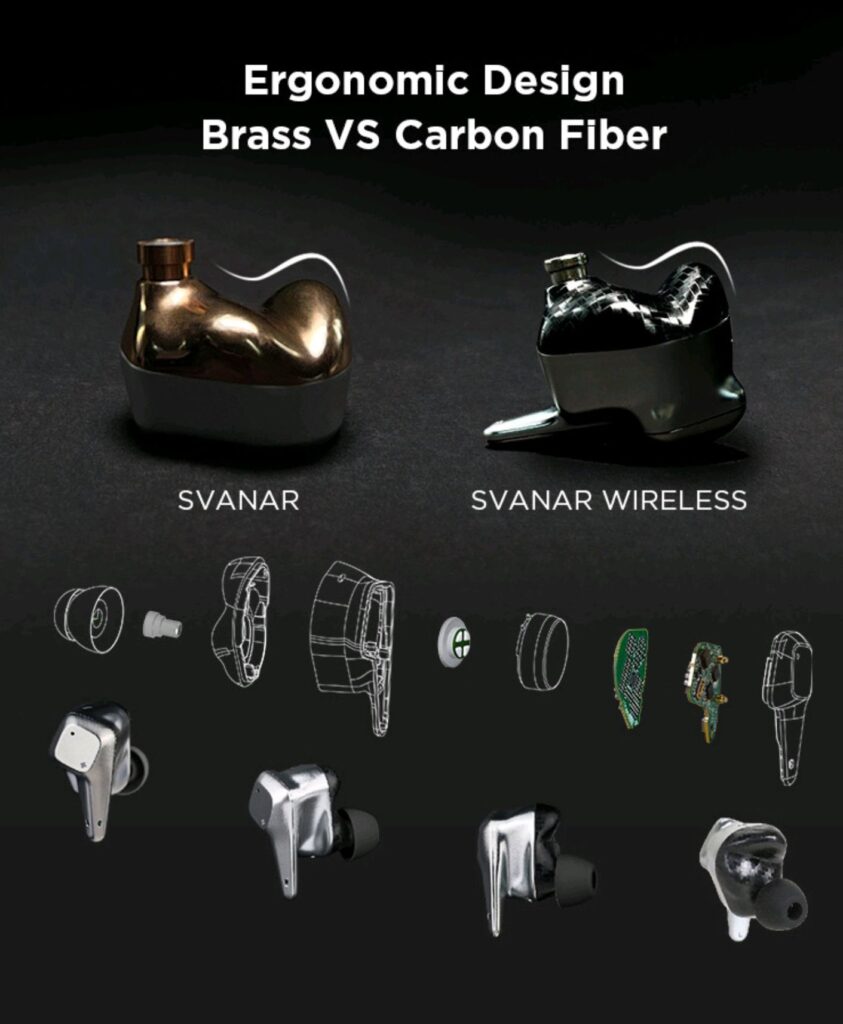
“Svanar” is the Swedish word for “swans” (plural). I think the name is reflected in the design of the earbuds. They look really elegant and stand out from the crowd with a unique design, satin metal finish on the outside and carbon fiber on the inside. The charging case is quite exclusive looking too. With its clamshell design, it looks like a jewelry case. It is not the smallest of its kind, so it is not ideal for slipping into your skinny jeans pockets. It’s also a bit tricky to open with one hand.
The Svanar Wireless is IPX5 certified, which is a step up from e.g. the IPX4 rated Sennheiser Momentum TW3. IPX5 rating offers protection against water from low-pressure sources, like a bathroom sink faucet. It’s not fully waterproof but splash-proof, water-resistant and sweatproof.
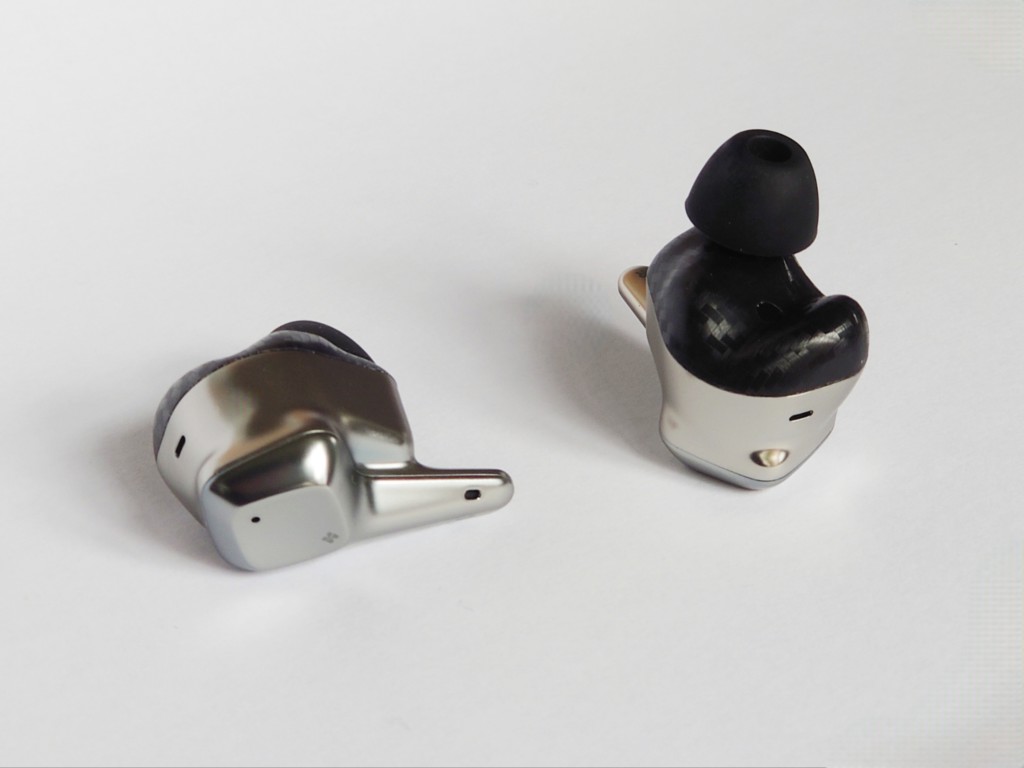
TECHNOLOGY
Every wireless in-ear monitor need 4 basic components. A Bluetooth receiver, a DAC, an amplifier and a driver. The Svanar is special in several ways. Maybe the most remarkable aspect is that it uses an R2R DAC. Such DACs are complicated and are usually seen in big desktop DACs. I have an R2R DAC that weighs 10 kg on my shelf. Further, the Svanar has a proprietary dual amplifier module that drives the speaker/driver, which in turn features the previously mentioned “Topology Diaphragm”.
There are 3 listening modes. Active Noise Cancelling (ANC) Mode, Transparent Mode and High Fidelity Mode. I kept to High Fidelity mode throughout all listening comparisons done in this review. It sounds better, unsurprisingly. The ANC and Transparency modes work, but they are not the most effective I’ve heard.
With regards to Bluetooth transmission, the Svanar Wireless supports the basic SBC codec, the AAC codec (the highest quality codec supported by Apple) and the high-resolution LDAC codec.
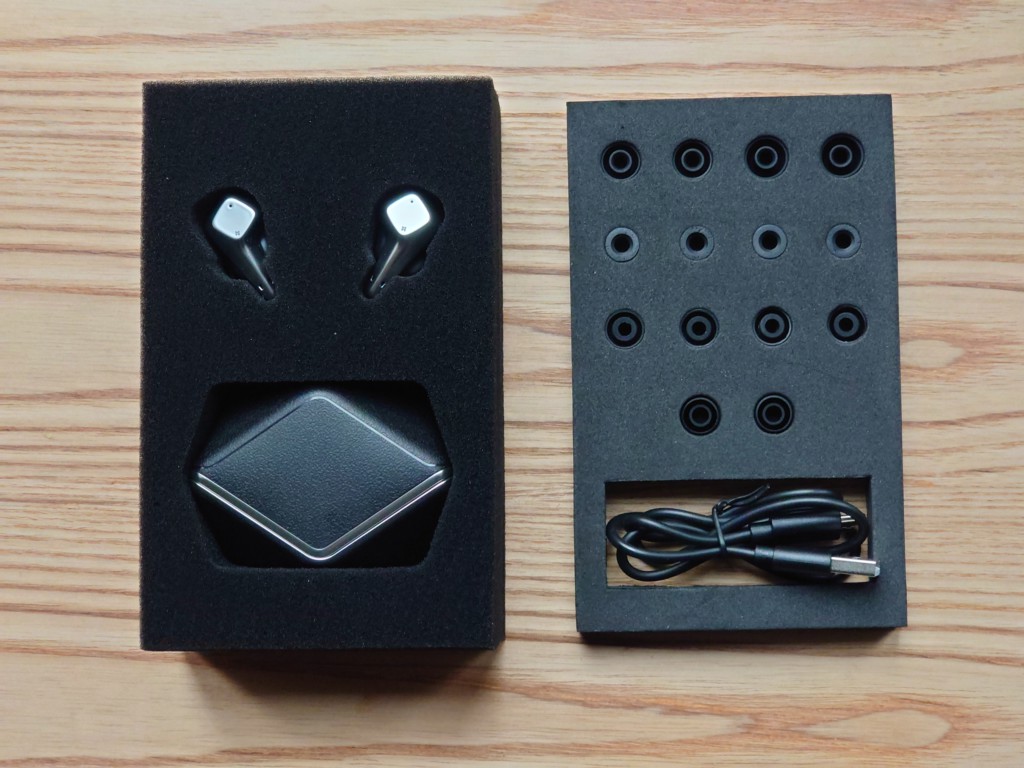
SETUP
Setting up the Svanar Wireless was very uncomplicated. I just made a Bluetooth scan with my Android phone and it found it right away. Within seconds they were ready to play. I was also lucky enough that the tips that were pre-installed on the Svanar fitted me quite well.
With regards to call quality, the sound quality has been very good both for me and the person on the other end.
BASIC FUNCTIONS
The Svanar Wireless has the typical touch controls. Here are the most important ones:
Music listening: Tap the left or right earbud once to pause, and tap again to resume playback. Double-tap one of them to go back to the previous track. Tap three times on an earbud to skip to the next track.
Listening mode: Press and hold the left bud for 3 seconds to switch the listening modes: Noise-canceling, Transparency mode and High Fidelity mode.
Calls: Tap twice on a plug to answer the call. Press a bud and hold for 3 seconds to reject the call.
Voice Assistant: Long press to prompt your voice assistant (e.g. Apple Siri or Google Assistant).
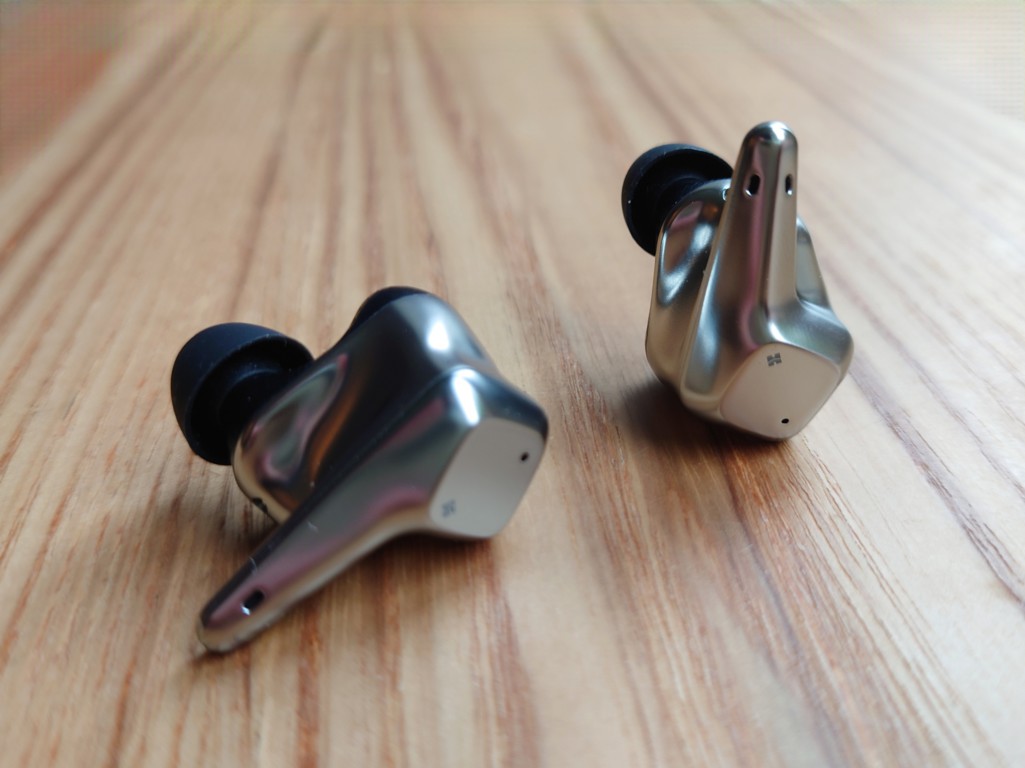
SPECIFICATIONS
- Single driver construction with nanotech Topology Diaphragm
- Hifiman Hymalaya R2R DAC
- Frequency Response: 10 Hz – 35 kHz
- Bluetooth Version: Bluetooth 5.2
- Bluetooth codecs: SBC, AAC or LDAC
- Battery life HIFI Mode: up to 4 hrs
- Battery life ANC Mode: up to 6 hrs
- Battery life Transparency Mode: up to 7 hrs
- The battery case gives appr. 3 recharges of the IEMs
- ANC Spec: up to 35dB
- Waterproof: IPX5
- Single IEM Weight: 8g
- Charging Case Weight: 83.7g
- Transmission Distance: up to 15m (barrier-free transmission)
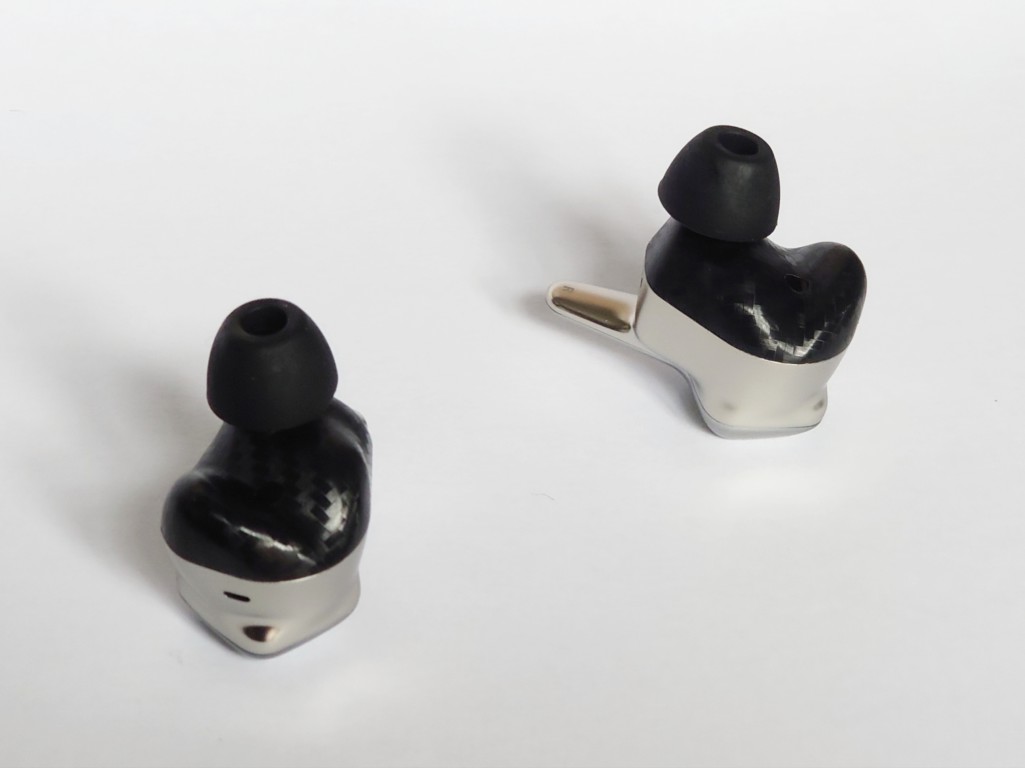
ABOUT TIPS
There are a variety of tips included of good quality. However, tips are due to the fact that every ear is different, not easy to get right. I found the included one that fit me best to be quite ok, but tried out several 3rd party tips before I settled on C145 SpinFit tips. It’s all about getting a comfortable seal without too much fiddling. Good seal is of paramount importance especially with regards to the bass. All IEMs deserve tips that bring out the best from them.
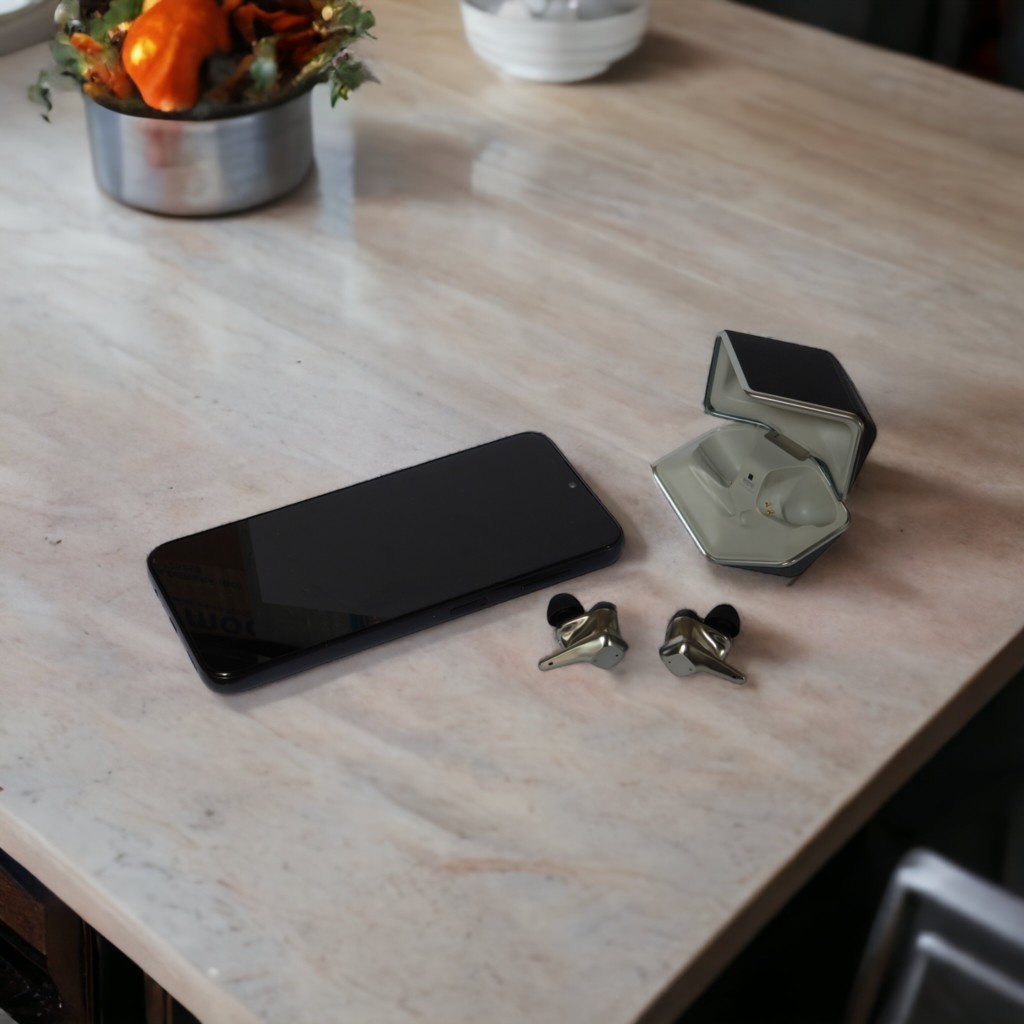
LISTENING IMPRESSIONS
PHONE 1 / LG V40
I have been listening to wired in-ear monitors a lot lately, and was very curious about what the Svanar Wireless would sound like. First I hooked it up to my LG V40 running Android 10.
All For Us by Labyrinth
The soundstage is quite open. The bass is not overdone and has lots of texture. The vocals are nicely rendered and have a pleasant and natural tonality.
If I Were a Bell by Keith Jarrett
This great jazz piano trio sounds fabulous with the Svanar Wireless. What strikes me the most is how balanced the sound is. The bass isn’t boosted, and the highs aren’t overly crisp. The mid-range is not held back like in many “fun-sounding” IEMs.
Bored by Deftones
The fuzz guitar riffs are rendered with punch and depth. Separation is good, the vocals are really clear and separated from the rest.
Almost Like the Blues by Leonard Cohen
Again, the bass is nicely detailed and well-balanced. Cohen’s voice is full of texture. The backing vocals feel very natural.
Be Good to Me Poly by Youandewan
A spacious, delicate and very soothing presentation. There’s plenty of detail, presented in a natural-sounding way.
Daddy Lessons by Beyonce
The bass is quite deep and present but not as dominant as it can be with other IEMs. Beyonce’s vocals are very natural sounding.
Brahms Symphony no 3 by Gewandhausorchester
I like the way these IEMs present the strings. They are not crisp and bright, yet with plenty of texture and detail. The soundstage is quite wide with good separation.
Identikit by Radiohead
The soundstage is nice and wide. The presentation is warm and pleasant, full-bodied and detailed.
Can’t You See by Susan Wong
Susan’s voice is full-bodied and warm-sounding. Lots of detail but not intrusive, more like everything blends nicely as a whole.
In Conclusion, I find the Svanar to sound really good. Its presentation is coherent with my experience with R2R DACs. The sound is on the warmer side of neutral. There is a good amount of detail and a wide soundstage. The bass is well-balanced and not too dominant. The mid-range is lush and has plenty of body. The treble is well-rounded and never gets intrusive. The detail level is very good and the instruments are nicely separated. The soundstage is quite open, though the imaging could be more pinpointed. I’d never call these IEMs analytical or clinical. In my book, that’s a good thing.
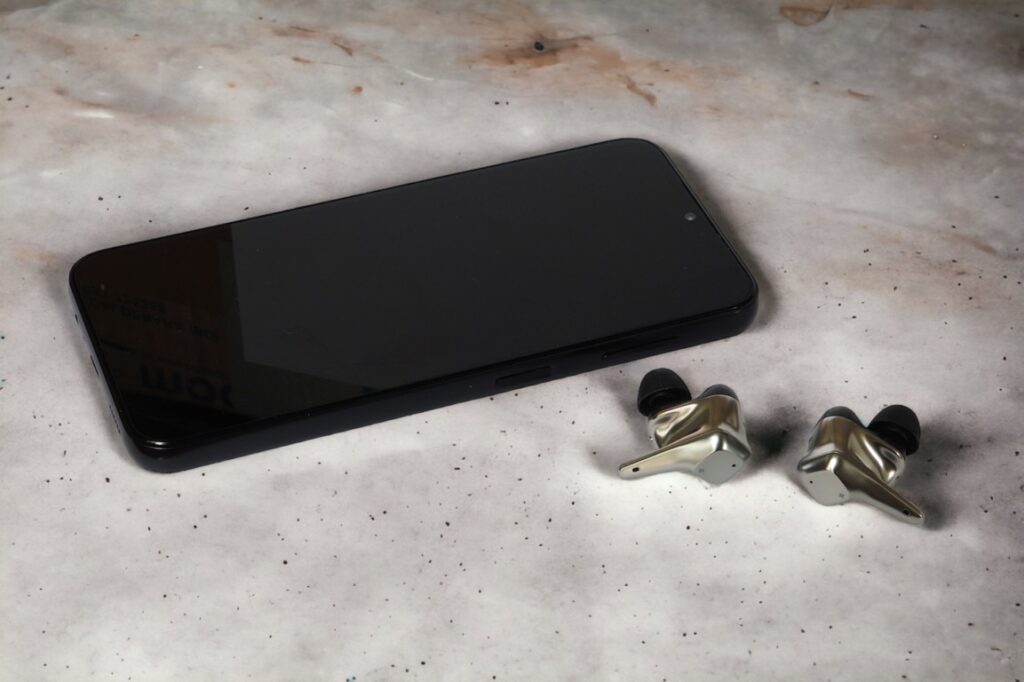
PHONE 2 / SONY XPERIA 5.2
When I connected my second phone, the Sony Xperia 5.2 running Android 12, I noticed that the sound was quite different. Whether I used SBC, AAC or LDAC, the sound was still different than it was with the LG. I’ll elaborate on why the sound can be different with different phones later but it has to do with differences in the phones’ digital signal processing.
With the Sony, the sound of the Svanar Wireless is crisper and brighter, more analytical and has less warmth and body. The instrument separation is better, though. Details are clearer, the presentation is more snappy. There still isn’t a ton of bass, the mid-range is still great but the smooth treble I had with the LG is exchanged for a crisper tonality. A different flavour – for better and for worse depending on your preferences.
Daddy Lessons
The bass is not huge but it’s still very present. The guitar is crisp and clear. The soundstage is large, with good separation of the various instruments. The detail level is high and there’s nice imaging and layering.
Down by Stone Temple Pilots
The bass could be more groovy, I do miss some extra push in the lower octaves. However, the bass has good definition and it’s easy to separate it from the guitars even when they play the same riff.
En Casa Los Herrero by Tomatito
The flamenco guitar is crisp and articulate, the vocals are very upfront. Lots of detail.
All For Us by Labrinth
The bass is again a bit weaker than I’d prefer, but it’s nicely textured. Also, the details in the background are really coming through. Increasing the volume helps a lot and brings out both the bass and general dynamics.
Almost Like The Blues by Leonard Cohen
Cohen’s voice is presented with the raspiness it should have. There is great separation and imaging is very accurate sounding
Winter – Vivaldi 4 Seasons by The Norwegian Chamber Orchestra
The strings have plenty of attack and bite, there’s lots of detail, you can easily hear the violins’ overtones.
Floratone by Floratone
Very snappy and crisp presentation of this blues/jazz guitar-focused track. The bass isn’t as full as I’m used to, but there is plenty of detail and great imaging and layering. Again, cranking up the volume helps a lot with bass presence and dynamics.
For himmerigs land maa man kjempe by Ingebrigt Håker Flaten, Håkon Kornstad, Jon Christensen
This fabulous jazz improvisation over an old psalm is always a great listen. With the Svanar Wireless, it’s bright and clear, crisp and detailed. As I’ve done along the way before, I try swapping back and forth between the SBC, AAC and LDAC codecs. LDAC sounds not only a bit more resolved but also I find that the saxophone sounds slightly fuller.
Gilimanuk by Nils Petter Molvær
The bass here can be a bit overwhelming sometimes but it sounds nicely balanced with the Svanar Wireless. The trumpet is airy and crisp sounding.
Freely by Raffaele Califano Quintet
The precision is very snappy and dynamic, it’s a joy to listen to. The bass is not huge, but it’s there. The saxophone is clear and crisp. The soundstage is big, wide and the imaging is precise.
Furniture by Fugazi
Here, the bass is really nicely rendered in an entertaining and bouncy way. The fuzz guitars are great. Precision is crisp and clear – the presentation is really tight.
In Conclusion, I do indeed get quite a different sound with my Sony Xperia 5.2 than with my LG V40. The sound with the Sony is very detailed and clear. It has great separation. However, it gets more analytical and has less body and warmth. I did find that the sound also was a bit dependent on the playback volume. If you play loud enough, the sound gets very dynamic and the bass breaks through. For me, the Sony/Svanar Wireless was a bit dull and bright sounding at low listening levels, at higher levels, it’s great. My personal comfort levels are just at the border between these. I did not experience the same with the LG V40.
Just for the record, I switched back and forth several times between my Sony Xperia 5.2 and the LG V40, just to be completely sure my memory didn’t fail me. The sound is quite different. It’s warmer and thicker, less bright and crisp. The bass and mids are fuller, the highs are mellower. The soundstage is slightly less pinpointed.
I checked and adjusted both my phones’ settings as far as I could. Switching between codecs in my Sony phone’s developer options didn’t do by far as much difference as switching between the two phones. Neither did changing codec modes in the LG. However, as mentioned, they both positively did play in LDAC mode, which is what I used in my listening sessions.
The explanation for the difference in sound between the two phones is that different phone manufacturers apply different DSP settings in their audio configurations. There are lots of audio-based config files that can only be accessed and changed if you root your device. With an unrooted device, you get the sound that the manufacturer chose, and there isn’t anything to do about it. Like it or not, digital music reproduction is more complicated than one might think.
WHAT ABOUT iPHONE?
iPhone does not support LDAC (a Sony licensed codec), only the basic SBC and the more advanced AAC codec. AAC supports 24-bit/44.1kHz audio files, with a bitrate of up to 320kbps. The LDAC codec supports hi-res audio up to 32-bit/96kHz at up to 990kbps.
However, on my Sony, I did not experience a night and day difference. AAC (which is the best codec available to iPhone users) sounded very good, although not as good as LDAC. There seem to be many factors at play, though. It’s not only the codec, sampling frequency and the bitrate, it’s also the DSP in the phone. I cannot really say anything with absolute certainty about how the Svanar Wireless sounds on an iPhone until I’ve tried it. However, I would be surprised if it sounded radically different from what I’ve experienced with my two different phones.
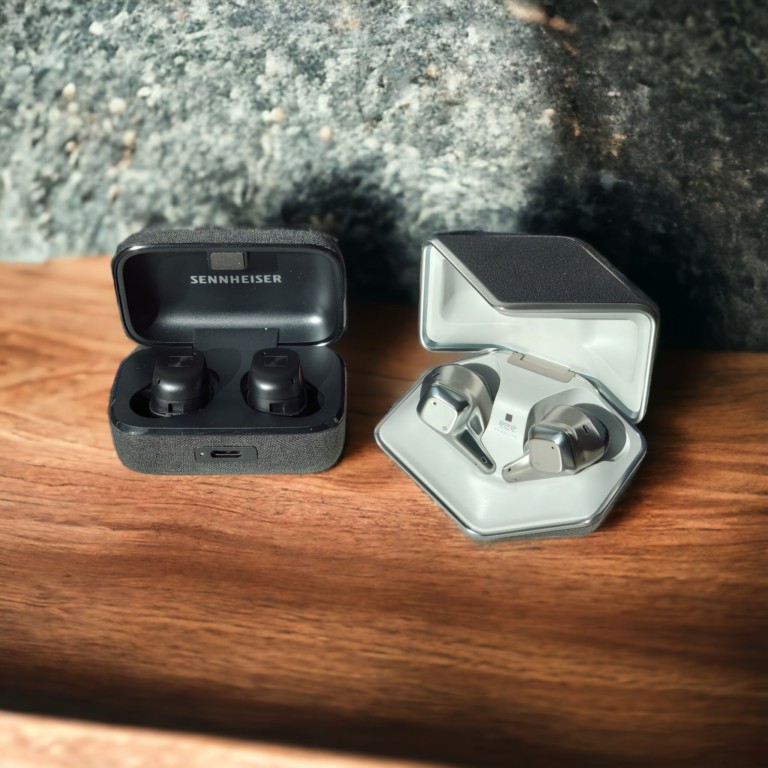
COMPARISONS
WIRELESS COMPARISONS
I do not have a large collection of wireless in-ears but did have two interesting sets at hand: The Sennheiser Momentum TW3 and the Sony WF-1000XM4.
The Sony has a quite wide soundstage and a very solid and sometimes overdone bass presentation. The mid-range is decent but can come in the background of the bass. The treble is well-defined but without much sparkle.
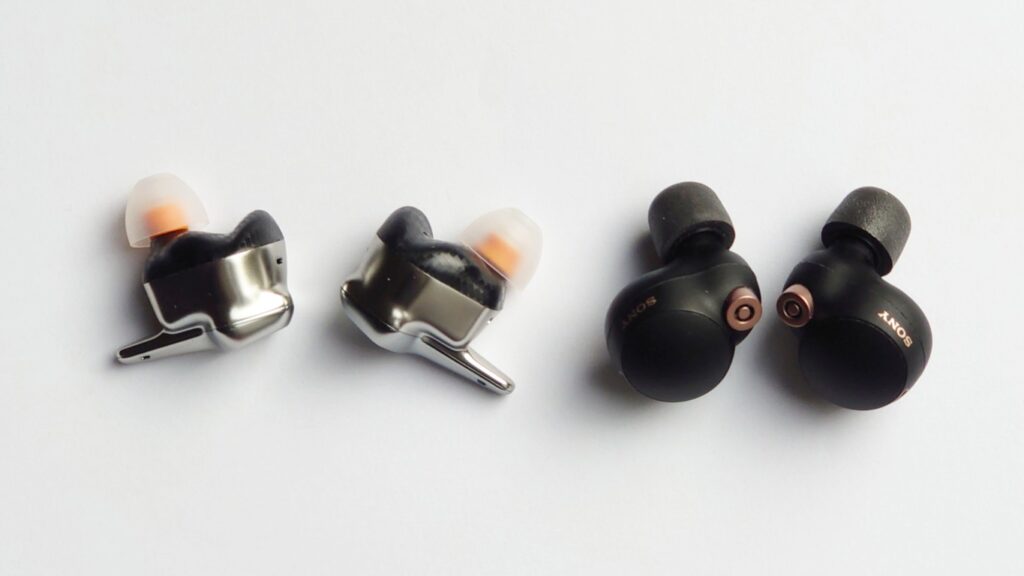
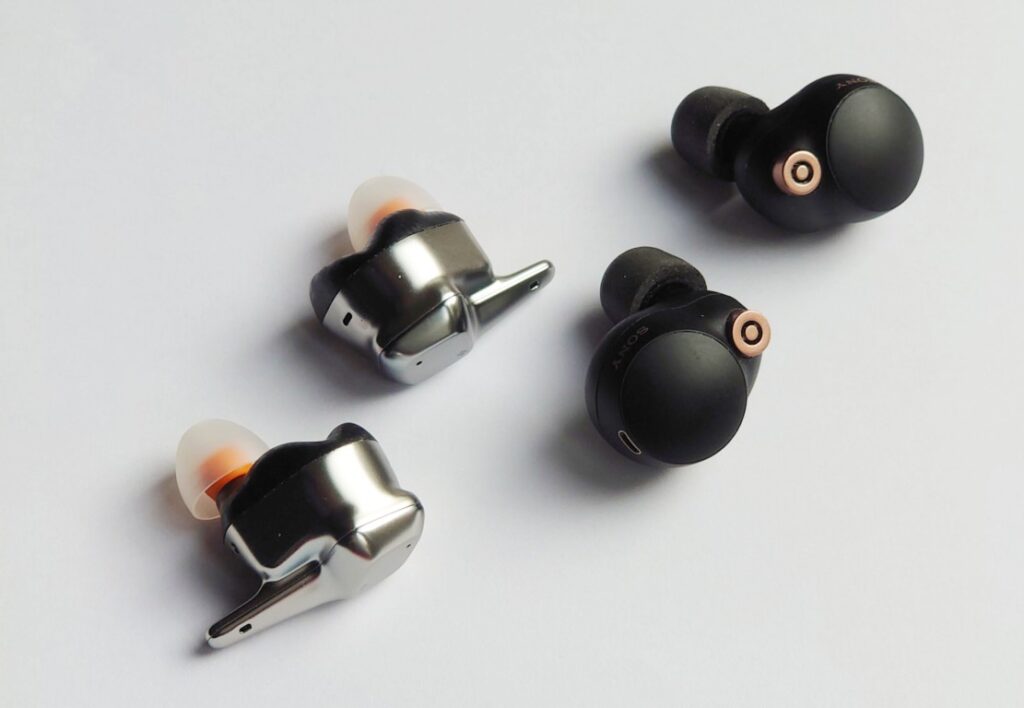
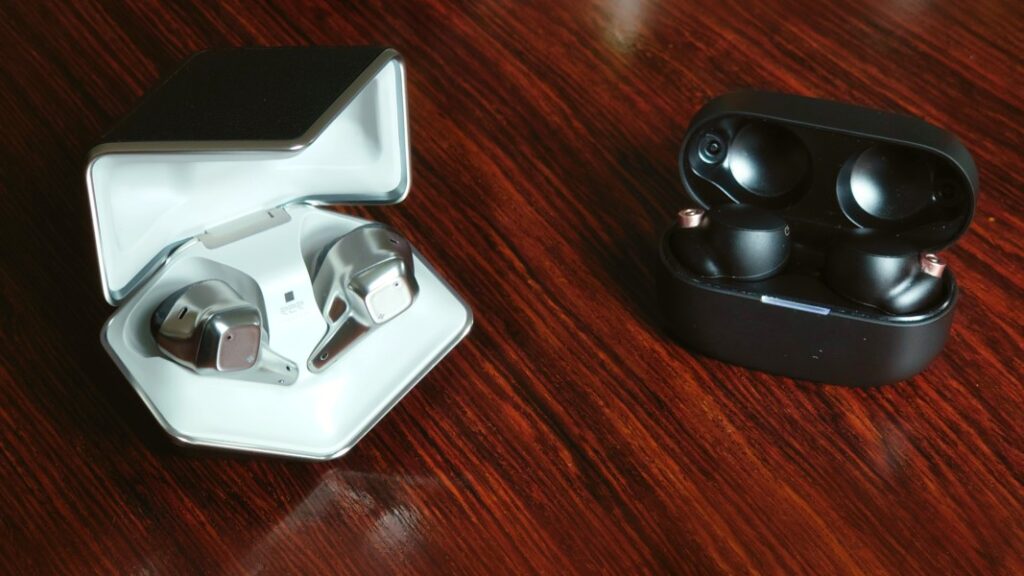
The Momentum TW3 is leaning more towards a neutral presentation but still has quite some bass emphasis. The soundstage isn’t especially wide. The highs are clear with nice air. The midrange is good but sometimes it’s overshadowed by the bass.
They both are inferior to the Svanar Wireless in terms of neutrality, resolution and soundstage. They have a less neutral and more “fun” tuning with more bass presence. They also come with a dedicated app with EQ etc, something the Hifiman Svanar lacks. However, an app is only useful if you use it.
For audiophile listening purposes, the Svanar Wireless is definitely the best choice.
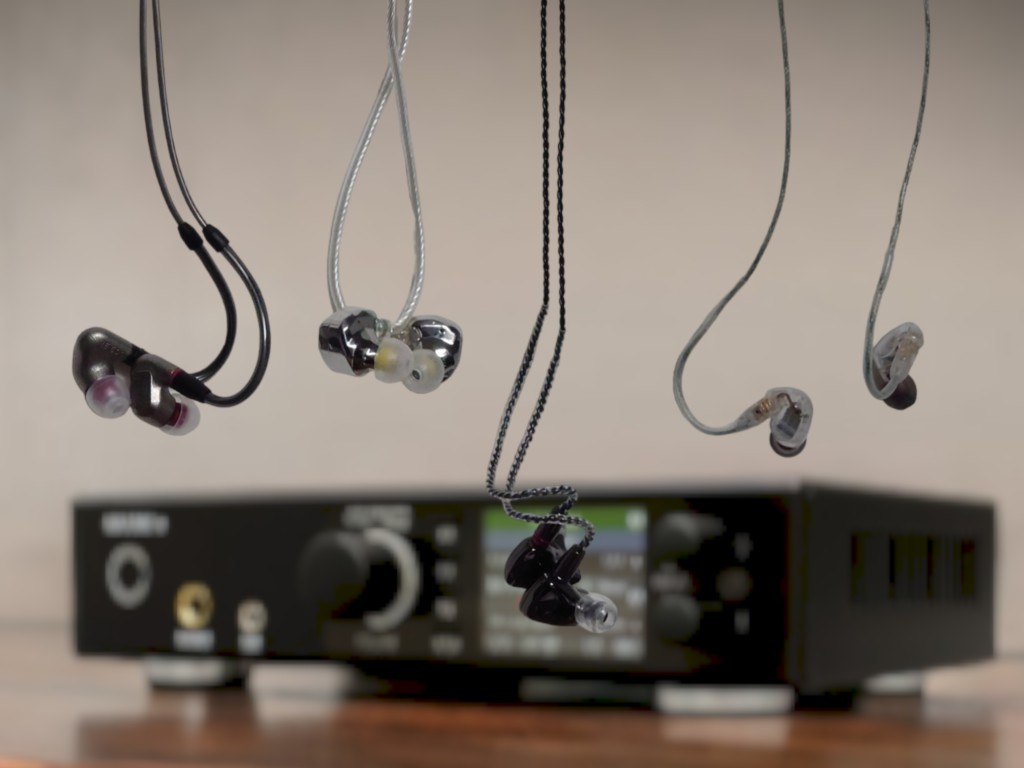
WIRED DESKTOP COMPARISONS
The Svanar Wireless are great, but can they replace a desktop rig? To answer this, I gave the Svanar Wireless some wired desktop competition using the Monolith THX AAA 887 desktop amp and the RME ADI-2 DAC FS.
SHURE SE425
This is a very bass-light in-ear monitor. It is definitely less pronounced in the lower regions than the Svanar Wireless. The midrange is tuned with a focus on the upper mids, the treble is clear and yet very smooth and not overly bright. Overall the SE425 is more top heavy than the Svanar Wireless. The Svanar Wireless sounds closer to the SE425 with the Sony phone than with the LG. I find the Svanar Wireless a little too bright with the Sony and definitely prefer the treble of the SE425 but with the LG it’s a clear overall preference towards the Svanar Wireless. The SE425 on the desktop rig sounds better on lower volumes, though. The Svanar Wireless needs a certain level to shine.
MOONDROP KATO
The $190 Kato is a great value IEM. Well amplified, it sounds quite similar to the Svanar. The tuning is similar, the soundstage, and the detail level too. The extensions are, however, better articulated with the desktop rig, both the bass and the treble. I must admit I prefer the desktop rig, but I am impressed by how close the Svanar gets.
iKKO OH10 OBSIDIAN
The $200 iKKO OH10 is another pair of great value IEMs. They are similarly tuned to the Kato and also the Svanar Wireless: Clean and quite neutral. I think the OH10 is generally a little steep up from the Kato. The Svanar cannot quite hold up against the iKKO OH10 on my desktop rig. There is better extension at both ends, the soundstage is deeper and better defined. The Svanar Wireless is quite close, though.
In conclusion, I think Svanar Wireless IEMs hold up impressively well against some of the best value-for-money IEMs available powered by an expensive, full-size, completely wired rig. On this setup, I prefer the Svanar Wireless to the Shure SE425, and it comes close to the Moondrop Kato and iKKO OH10. Bear in mind that the desktop DAC and amp is many times the cost of the Svanar Wireless.
WIRED PORTABLE COMPARISONS
First I compared the Svanar Wireless to the iKKO OH10 Obsidian with the renowned THX ONYX USB dongle. This setup is approximately the same price as the Svanar Wireless. The question now is: Are they on the same level? Yes, they are. I might find the iKKO a tad better in the bass and the midrange a little sweeter on the Svanar Wireless but there’s no real reason to prefer the one over the other with this setup.
Then I took out the precious Sennheiser IE800S. It’s one of my favorite IEMs. I feel it’s a step up from the Svanar Wireless in its effortless and organic presentation but it’s also much more expensive.
Finally, I hooked up the Moondrop Kato with the THX Onyx and the Svanar Wireless was not inferior at all. If anything it was better sounding.
In conclusion, the Svanar Wireless definitely can match a great sounding wired portable rig.
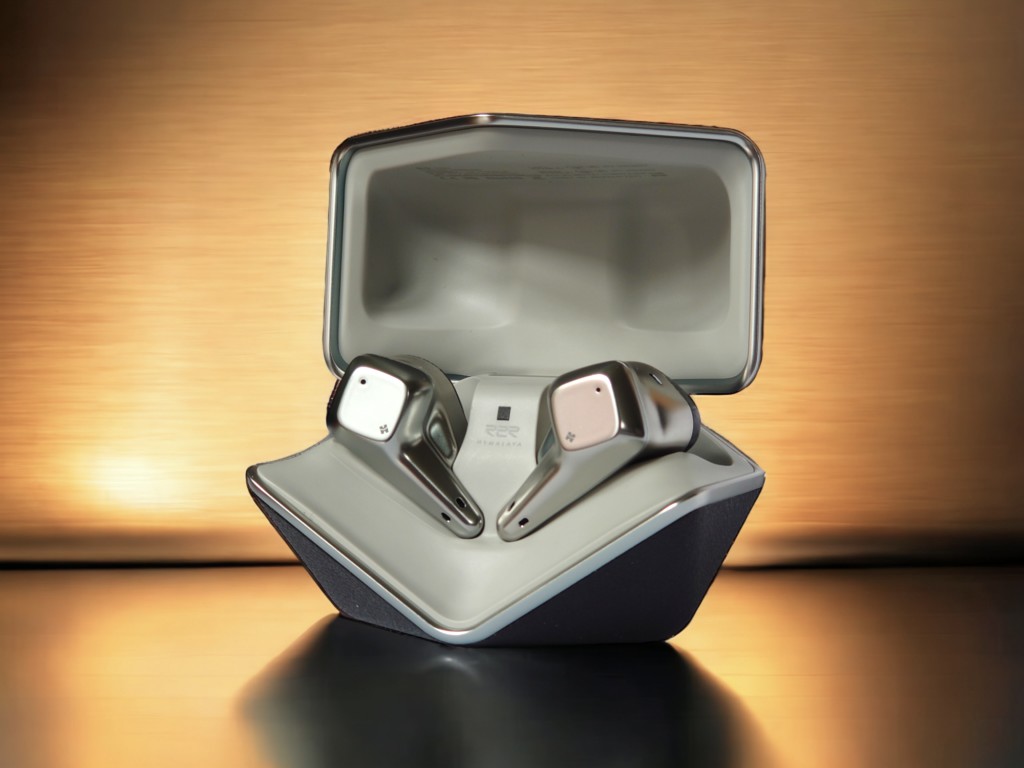
CONCLUSION
The Svanar Wireless is a game changer. Finally, wireless IEMs can compete with high quality wired options.
The Svanar Wireless delivers audiophile level sound quality. It’s spacious, detailed, well-balanced and has a slight, delicate warmth to the mid-range.
It is more expensive than other wireless options but for the audiophile who wants the same quality as he or she can get from a good wired setup, it is well worth it.
Weighing only a few grams, the Svanar Wireless gives many wired IEM setups real competition. For what it is, the Svanar Wireless is a marvel.
You can buy the Svanar Wireless here
We make earnings through affiliate links and any purchase you make on Amazon or Linsoul clicking one of our links will give us a small provision at no cost to you.
We only get a provision for items that are not returned, so there’s no incentive for us to recommend something that’s not good.
Linsoul : Headphones, Earbuds, Wireless Earbuds, Desktop DAC/AMP, Portable DAC/AMP, Digital Audio Players,
Amazon: Headphones, IEMs, Headphone Amplifiers, Home Audio or Anything else.
.
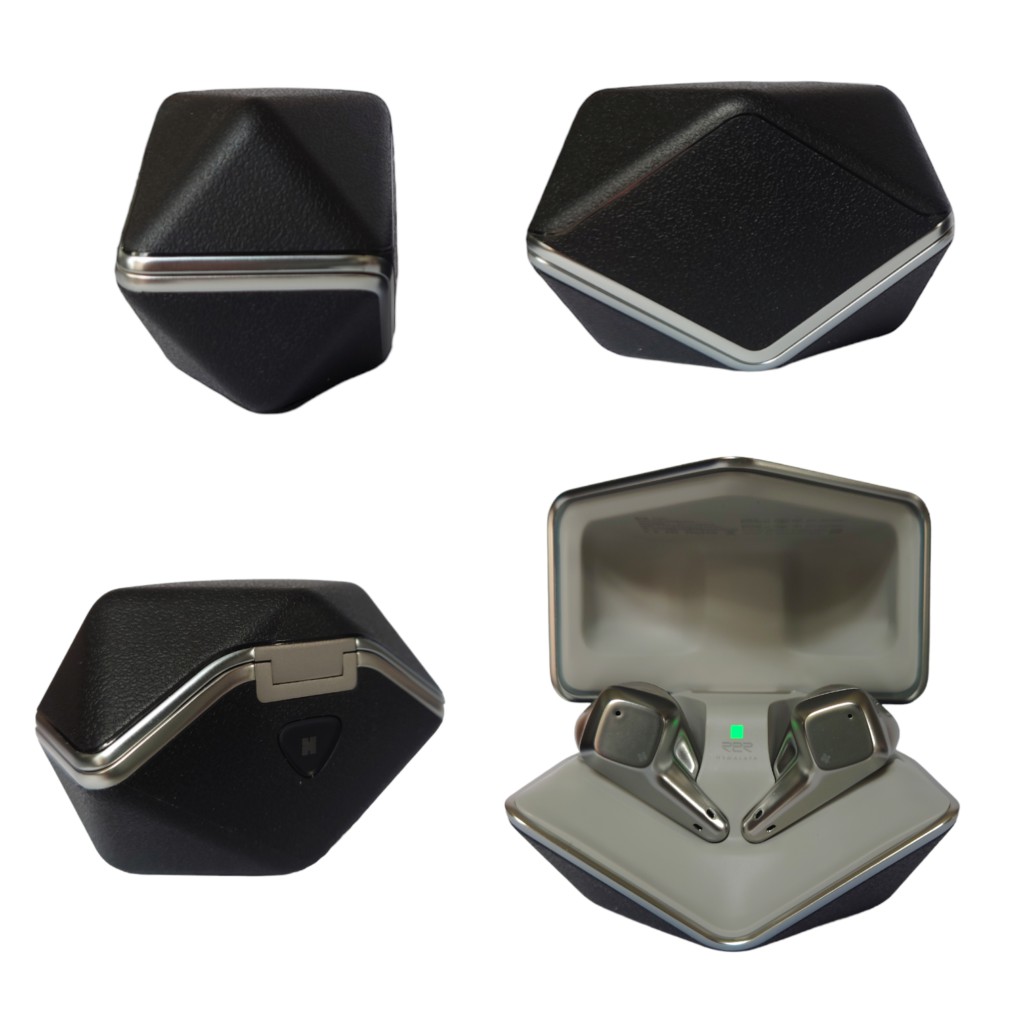
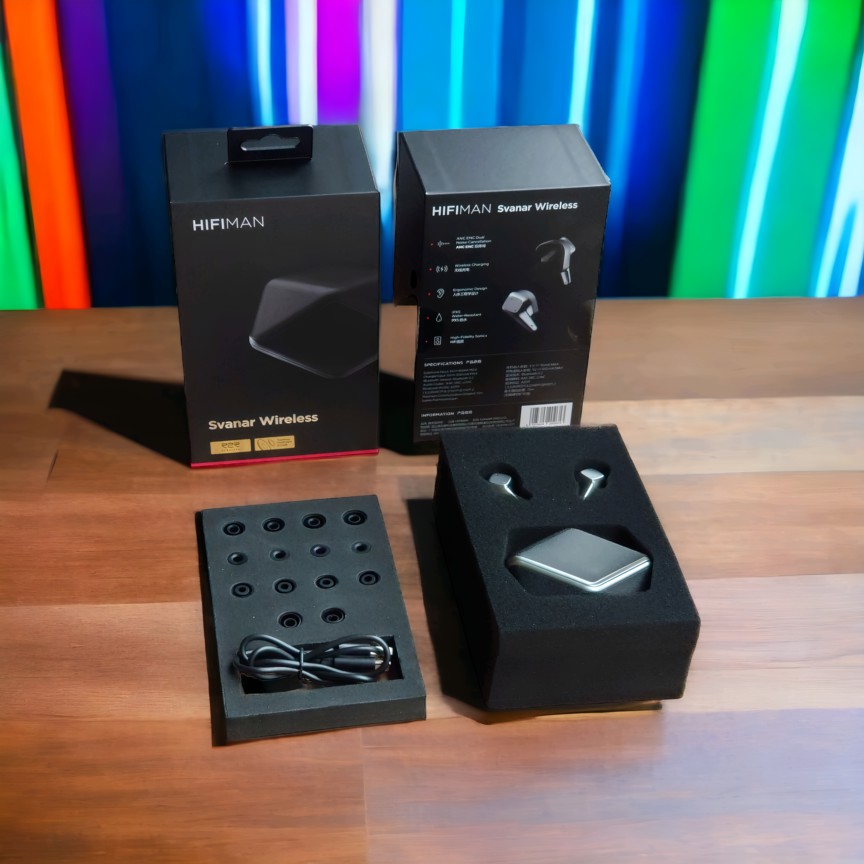
Further readings:


